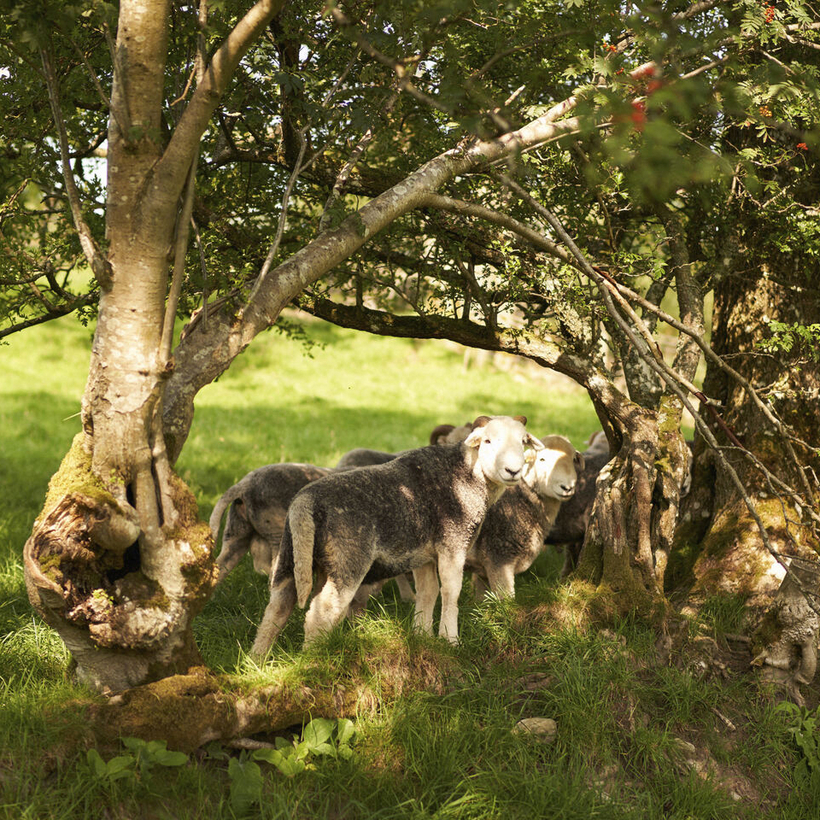You would have to have been living on Mars to have missed the troublesome news about farming. There are nearly 7.9 billion of us, and we definitely all eat. And the way we’ve produced food from the end of World War II until now has caused grave damage—not just taking wild places for new farmland but increasingly squeezing nature out of the land we have farmed for centuries. I’m a farmer, so this isn’t an easy thing to write.
It sometimes feels like this is a lousy age to be a farmer, because whatever we do we are subject to endless criticisms. But in the past few years I’ve come to believe that this is also one of the most exciting times in history to be a farmer—because the problems we face are solvable.
Today, we need smart farmers who can mend our soils, restore native habitats and natural processes, fill our landscapes with insects, birds, and wildlife again, and, in such thriving landscapes, grow healthy, nutrient-dense food.
We are increasingly aware that the processed junk we have been feeding ourselves is a public-health disaster and that the answer lies in real foodstuffs produced in healthy soils and more natural farming systems.
The good news is that we know how to produce enough calories to feed everyone alive now, and the couple of billion more who will soon be born. And we know how to do this in ways that are much more nature-friendly than the methods we’ve used so far.
But to get there we need to re-invent farming, shift away from bad industrial and chemical practices, and learn from farmers who have achieved this complex mix.
Re-Inventing Farming
There are astute farmers who have innovated and developed systems that work. And for the first time in my life they are now being listened to and given the respect they deserve. Yep, that’s right. The kid at the back of the class who wanted to be a farmer and got laughed at now has one of the most important jobs on the planet.
This movement to make farming better is often called “regenerative agriculture,” which basically means any farming that seeks to do more than simply be sustainable. (What use is sustainability if the soil or eco-system is completely broken?) It is farming that actually mends eco-systems and restores nature, particularly by building healthy soil.
Regenerative agriculture has its heroes, such as Allan Savory, Joel Salatin, Gabe Brown, and Richard Perkins. Their farms have become places of pilgrimage and study as others seek to learn their secrets.
These folks have been championing better ways to farm for many years, even when no one took them seriously. They have developed a number of simple technologies and systems on their farms that many farmers now want to copy—movable chicken coops to restore pastures with muck, for instance; highly managed and planned grazing systems that mimic large herbivores on prairies and steppes; and the use of multi-species cover crops and livestock in mixed-cropping systems to repair the soil from repeated annual crop production.
The way we produced food from the end of World War II until now has caused grave damage. I’m a farmer, so this isn’t an easy thing to write.
These ideas and practices are now discussed openly in my community, and often copied and implemented. Farming used to be something you did by copying what your dad did. But these days the game has changed—our understanding of soil and plants has been transformed by science.
It turns out that conventional agriculture—producing commodity crops such as soy and corn—is little more than a hustle by which corporations make all the money and the farmer goes broke. There is hope that regenerative farming might be a better way to keep people on the land, doing meaningful work that will allow them to pay their bills. But there are also doubters.
Some of the regenerative-agriculture folk are slightly cranky—as you’d expect from a movement of old farm boys that began by doubting the whole postwar scientific consensus. It’s just that the science keeps proving them right.
There is also a lively debate about how new this all is. A lot of the best regenerative practices are really very old ones that were common to indigenous peoples before Europeans killed or displaced them from their land.
There aren’t enough women being celebrated or heard in this debate, despite much of the farming on earth being done by women working in the fields. The same can be said of immigrant workers, who are often the ones laboring in the fields in affluent countries.
And, like any movement, it has quickly been exploited by corporations, who are trying to sell products using the label “regenerative,” tacking it onto items produced using the very chemicals or machinery that regenerative farming opposes.
Though it is quite clear that we can farm better, what’s less clear is how these practices can be made profitable. The dream of a landscape of small farms selling at farmers markets or to the neighbors is, for the most part, still just a dream. The rest of society will need to change, too—by accepting that sometimes food will cost more, by making the effort to visit farmers markets, and by demanding that food is produced by regenerative-farming techniques—for this to work.
Despite all these caveats and concerns, I’m excited by regenerative agriculture. It is changing the way we live and farm, and I’m grateful for the lessons we are learning. I hope it will give my children a future on the land. Farming has never been more vital or important. Your future and mine depend upon it. We need to all play our part in transforming our landscapes for the better.
James Rebanks’s Pastoral Song: A Farmer’s Journey is out now from Custom House

